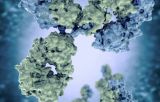American Research Products
 |
||
Based in Massachusetts, American Research Products (ARP) provides high quality products to research laboratories in hospitals, universities and biotechnology companies around the world since 1994.
ARP provides monoclonal and polyclonal antibodies as well as purified and recombinant antigens for research. The product catalog for diagnostics includes products for the detection of cytokines and growth factors, infectious diseases / TORCH and autoimmune diseases, bone and mineral metabolism, cardiac markers, catecholamines and bioamines, Reproductive and fertility tests, tumor markers, steroids as well as products for endocrinology, neurology.
Website : www.arp1.com
| ||

Fragmented Antibodies
Secondary antibodies are antibodies that bind to primary antibodies or antibody fragments.
Fragmented secondary antibodies are antibodies that have been enzymatically digested to remove the Fc region of the antibody, leaving only the antigen-binding Fab or F(ab')2 fragments.
These fragments are monovalent or divalent, respectively, and can be used to block endogenous immunoglobulins on cells, tissues, or other surfaces, and to block the exposed immunoglobulins in multiple labeling experiments using primary antibodies from the same species. They can also be used to label primary antibodies prior to incubation with the experimental sample. The advantages of using fragment secondary antibodies include eliminating non-specific binding between Fc portions of antibodies and Fc receptors on cells, facilitating better antigen penetration into tissue, and reducing background from primary antibody binding in double staining experiments.
The advantages of using Fab fragment secondary antibodies include:
- Eliminating non-specific binding between Fc portions of antibodies and Fc receptors on cells, which is particularly important when working with live cells.
- Facilitating better antigen penetration into tissue, which is important for immunohistochemistry (IHC) experiments.
- Reducing background from primary antibody binding in double staining experiments.
- Allowing for direct conjugation to detectable labels through their sulfhydryl groups, ensuring that the active binding site of the antibody is not affected.


